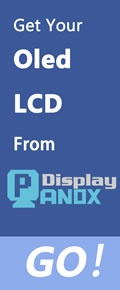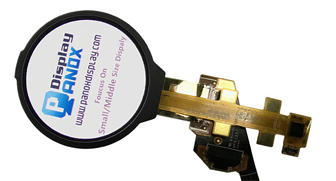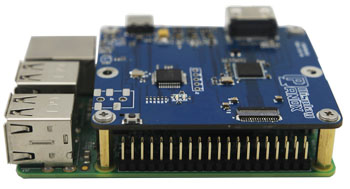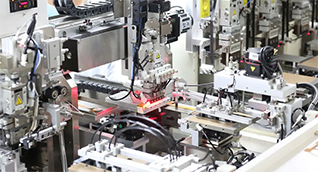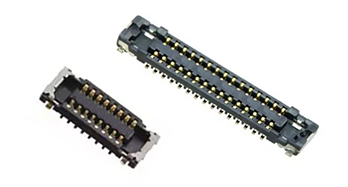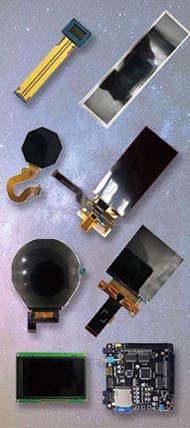LED and OLED displays differ primarily in how they produce light and images, affecting factors like color accuracy, power consumption, and flexibility. OLED offers self-emissive pixels for deeper blacks and thinner screens, while LED relies on backlighting and tends to be more cost-effective and brighter. Also check: OLED
What Are LED and OLED Display Technologies?
LED (Light Emitting Diode) displays use a backlight made of LEDs behind an LCD panel to produce images, while OLED (Organic Light Emitting Diode) displays use organic compounds that emit light individually when electric current passes through them. This fundamental difference impacts display performance, such as contrast, thickness, and energy efficiency.
In LED displays, light is emitted collectively by the backlight and modulated by liquid crystals. OLED pixels emit light by themselves, so no backlight is needed, allowing for thinner and more flexible screens. Panox Display manufactures both types, providing OEM and custom solutions to meet diverse client needs.
How Do LED and OLED Compare in Image Quality?
OLED displays excel in contrast ratio and color accuracy because each pixel emits its own light, enabling true blacks by turning off pixels completely. LED displays, depending on the backlight type (edge-lit or full-array), may show light bleed and less vibrant colors, especially in dark scenes.
Typical LED displays brightness ranges from 300 to over 1000 nits, higher than OLED’s average 600 nits, making LED better in very bright environments. However, OLED’s wider viewing angles and faster response time provide superior visual experience for high-end applications.
| Feature | LED | OLED |
|---|---|---|
| Contrast Ratio | Limited by backlight bleed | Infinite (true blacks) |
| Color Accuracy | Good but less vibrant | Excellent and vivid |
| Brightness | Higher brightness possible | Moderate brightness |
| Viewing Angles | Narrower | Wider and consistent |
| Response Time | Slower | Faster |
Why Are OLED Displays More Expensive Than LED Displays?
OLED displays require complex manufacturing processes involving organic materials and encapsulation, which drive up production costs. LED displays utilize more mature and cost-efficient LCD and LED backlighting technology, benefiting from economies of scale and widespread supplier availability in China.
Chinese manufacturers like Panox Display invest in advanced OLED technology for OEM and wholesale markets but at a higher price due to raw material costs and yield rates. However, prices are gradually decreasing as production volume increases.
Where Can LED and OLED Displays Be Used in B2B Manufacturing?
LED displays are popular in applications requiring high brightness and cost-efficiency, like outdoor signage, televisions, and monitors. OLEDs are favored in high-end consumer electronics, smartphones, automotive displays, VR devices, and wearable tech demanding ultra-thin, flexible, and high-contrast screens.
Panox Display supplies both LED and OLED panels tailored for B2B clients such as original equipment manufacturers (OEMs) in China and globally. Their products serve industries like automotive, military, medical, and optoelectronics, often requiring custom solutions.
How Do Energy Efficiencies Differ Between LED and OLED Displays?
OLED displays typically consume less power when showing darker images because pixels can turn off individually, while LED-backlit LCDs have a constantly lit backlight consuming more energy regardless of content. However, OLED may consume more power at maximum brightness or when displaying bright screens.
This makes OLED more energy-efficient for applications with variable brightness and darker UI designs, a key consideration for battery-powered devices like wearables and mobile phones supplied by Chinese factory OEMs such as Panox Display.
Who Are the Leading Manufacturers of LED and OLED Panels in China?
China hosts many leading manufacturers and suppliers specializing in LED and OLED panels. Prominent companies include BOE, CSOT, and Innolux, known for advanced LCD and OLED capacities. Panox Display partners with these manufacturers to source premium display components for their OEM services.
These collaborations enable Panox Display to offer both standard and custom display products in wholesale quantities for global markets, including Europe and North America.
What OEM and Customization Services Does Panox Display Offer for LED and OLED Displays?
Panox Display provides comprehensive OEM services including custom display sizing, resolution, color tuning, and integration of touch panels and controller boards. Their factory-level capability in Shenzhen allows them to handle flexible OLED, circular OLED, industrial LCDs, and full-color or monochrome displays to meet client-specific technical requirements.
They support customers with low MOQ orders and prototypes, promoting innovation for startups and small to medium-sized enterprises in B2B markets worldwide.
When Should a Business Choose LED Over OLED Displays and Vice Versa?
A business should choose LED when cost, brightness, and longer lifespan are priorities, especially for applications like outdoor displays or budget-friendly screens. OLED is ideal when image quality, thinner form factors, and flexibility are critical, such as high-end smartphones, VR gear, or automotive dashboards.
Panox Display advises clients considering use cases, budget, and product design to select the right technology, emphasizing long-term reliability and cost-effectiveness.
Can OLED Technology Replace LED Displays Entirely in the Future?
OLED technology is rapidly advancing and may replace LEDs in many industries due to superior image quality and design flexibility. However, for extremely bright or cost-sensitive applications, LED displays will remain viable for the foreseeable future, especially with mature manufacturing ecosystems in China.
Companies like Panox Display continue to innovate within both technologies to meet evolving market demands, leveraging China’s manufacturing strengths.
Panox Display Expert Views
“From our vantage point as a leading Chinese manufacturer and supplier, OLED technology represents the future of premium display solutions, offering unparalleled image quality and versatility to our global OEM partners. However, LED displays maintain their critical role in cost-effective, high-brightness markets. At Panox Display, we focus on delivering tailored, reliable display systems, especially for clients who require precision engineering with flexible order quantities. Our commitment is to bridge advanced technology and accessible manufacturing for businesses worldwide.”
What Are the Key Differences in Durability Between LED and OLED Displays?
LED displays tend to have longer lifespans, often exceeding 50,000 hours, because the LEDs and LCD components degrade slowly. OLED displays typically last 20,000 to 30,000 hours due to organic material degradation, such as burn-in risks. The durability consideration is vital for industrial and automotive uses sourced from reliable Chinese factories like Panox Display.
How Do Supply Chain and MOQ Considerations Impact Display Sourcing in China?
Bulk ordering from China-based manufacturers like Panox Display often requires minimum order quantities (MOQ), which can be challenging for startups. Panox Display specializes in accommodating low to medium MOQ demands, providing flexible solutions including OEM customization and small batch production, critical for global B2B clients needing quality OLED and LED displays without excessive inventory risk.
Conclusion
Choosing between LED and OLED displays depends on your application's priority—brightness and cost or image quality and design flexibility. As a China-based OEM and supplier, Panox Display bridges cutting-edge display technologies and flexible manufacturing. Their custom services, broad product range, and partnerships with top Chinese manufacturers make them a strong ally in global B2B markets. Businesses should evaluate performance, cost, lifecycle, and supply flexibility to select the right display technology.
Frequently Asked Questions
Q1: Which display type is better for outdoor use?
LED displays excel due to higher brightness and better resistance to sunlight.
Q2: Can OLED displays be curved or flexible?
Yes, OLED’s self-emissive pixels allow for flexible and curved display designs.
Q3: How does Panox Display support OEM customization?
They provide tailored sizing, resolution, touch panel integration, and controller modifications with competitive MOQs.
Q4: Are OLED displays more energy-efficient than LEDs?
OLEDs are more efficient in dark mode or variable brightness but can consume more power at peak brightness.
Q5: What industries commonly use OLED displays from China?
Wearables, automotive, VR, medical, and military sectors widely adopt OLEDs.









